Elegant, regal, magnificent! These are just some words used to describe the Doberman pincher breed. They are muscular dogs that can reach 28 inches at the shoulder and have shiny black, red, or fawn coats with rust-red markings. Dobermans have an athletic way of moving and a reputation for being loyal and fearless. There’s no doubt that they are a very handsome breed! At the same time, several other dogs look like Dobermans, so deciding which dog is right for you can be challenging.
When deciding, it is important to look at the breed histories. Your alternatives may have been bred for very different purposes – even though they look similar. There is a lot more to a dog than appearance! Dobermans were bred to protect humans and are classed as working dogs – they are meant to work with people. They are also the only American Kennel Club breed classified as a ‘protector of humans’. So, let’s take a closer look at some other similar breeds.
Beauceron
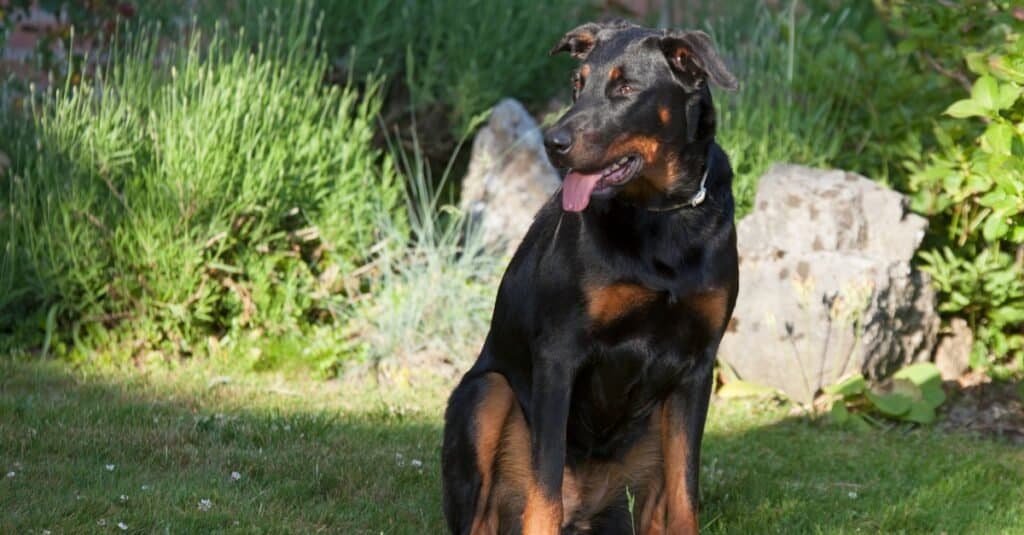
Beaucerons have the same coloring as Dobermans but are herders, not protectors.
©iStock.com/stobi_de
Originating as French sheepdogs, Beaucerons are faithful and intelligent companions with a height of around 27 inches. They have the same muscular build as Dobermans, with dark black coats and red accents, including distinctive red feet. Some, however, have a grey coloring, and their slightly stockier build makes them look a little more rugged. This breed matches the Doberman for elegance thanks to their chiseled facial features and fluid, effortless gait.
This dog is not right for you if you have never owned one. You will become the boss if you are not vigilant and skilled at training! They suit owners with experience training and socializing large and spirited dogs who can provide ample exercise and engaging activities. Understimulated Beaucerons can become destructive and difficult to live with. It would be best to remember that these guys were bred for herding and required a lot of exercise and adventure to keep them happy. This is also an important factor if you have children.
While Beaucerons can be extremely gentle and protective of the younger family members, they have also been known to try to herd them. Ask the breeder to show you videos of the parent dogs around children, and make sure that you establish early positive associations with your kids. Some get along well with other dogs, but others are happier to be the only dog in the family!
Rottweiler
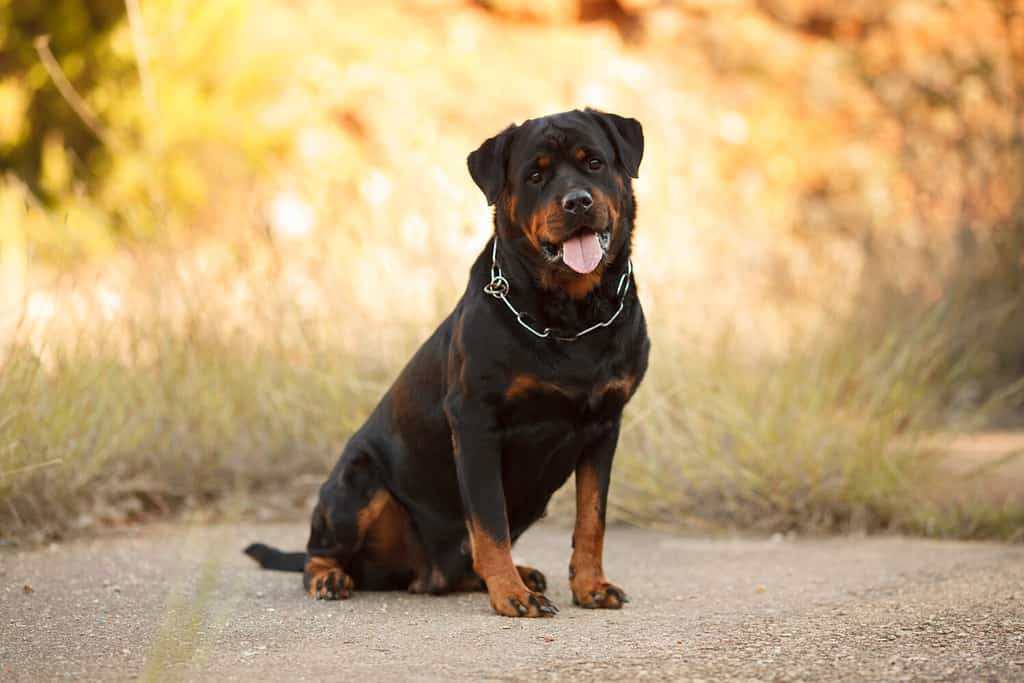
Rottweilers are black and red/tan but are stockier with shorter legs.
©Serova_Ekaterina/Shutterstock.com
The Rottweiler’s black and tan/rust markings and height resemble the Doberman’s. However, they have a stockier build, shorter legs, broader faces, and wide-set eyes, making them look more robust than elegant. These are generally regarded as calm and confident dogs who can be a little aloof. However, when they are around their loved ones, they can be extremely loving and a bit goofy!
Rottweilers have suffered from a poor reputation, making people worry if they are the right dog for them. Sadly, if dogs are trained to be aggressive, then that is what they will turn out to be. It does not mean, however, that aggression is an intrinsic trait of the breed. This breed loves children and is very playful. They are also very protective and will guard your family. Despite their size, they are usually calm dogs who will amuse you with their silly antics. However, obedience training is an absolute must from a young age. Rottweilers are easy to train because they are intelligent, but they need a firm and consistent approach, and you need to have sufficient time to dedicate to this. They also need a lot of mental stimulation, so give them a job!
Australian Kelpie

©everydoghasastory/Shutterstock.com
These dogs are shorter and heavier muscled compared to Dobermans. They are built like an athlete and are agile and quick-moving dogs. Their face is handsome, with a narrow head and long muzzle finished with pointed ears. The coats can be anything from black to cream, white, and gold.
Remember a few things before deciding if they are the right breed for you. Top of the list is their vigorous exercise requirements. Australian kelpies are workaholics who need to be given lots of jobs to do. If you’re unable to do this, they will become bored, leading to excessive barking and destructive behavior. You also need to be able to socialize them enough to prevent their shyness from becoming a problem. You may want to think twice if you have children because they can herd anything that moves, including the younger family members!
Vizsla
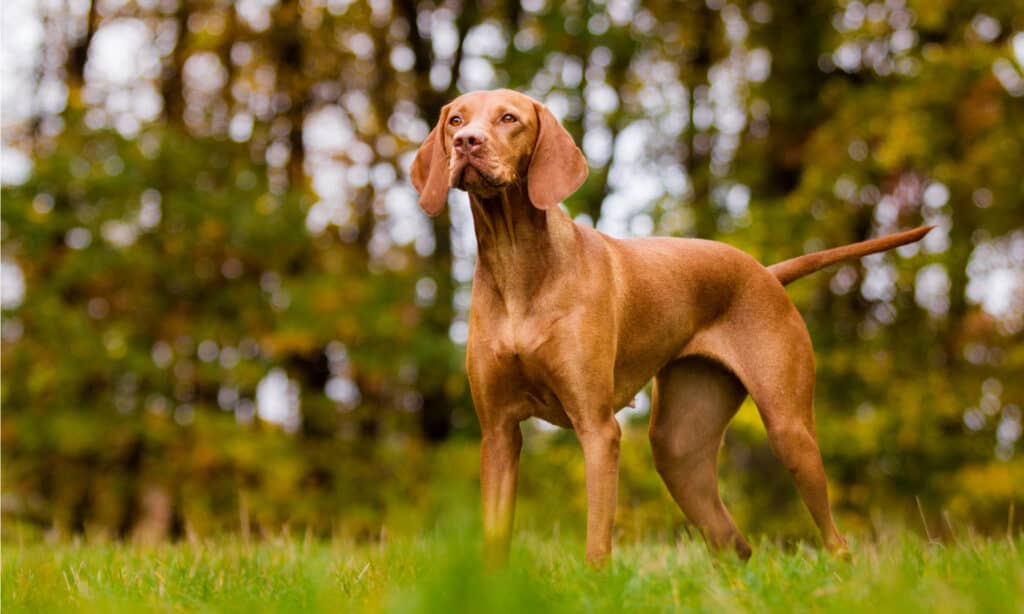
Vizslas are as elegant as Dobermans but are a different color.
©Aneta Jungerova/Shutterstock.com
Vizslas are smaller than Dobermans and stand up to 24 inches at the shoulder with floppy instead of erect ears. That said, they can match Dobermans for elegance and have a similar lean appearance and a graceful, light-footed trot. Their coat color is different; it is a solid, sleek golden rust. Vizslas become very attached to their owners and dislike being left behind!
These dogs fit best in households with the time and resources to maximize their intelligence and potential. What they need more than anything is active pet parents. Ideally, you will have access to a large outdoor space where they can get plenty of exercise. These dogs also have a lot of personality and a lot of energy – perfect for you if you need a jogging or cycling companion. If you can only manage a quick walk around the block daily, these are not suitable dogs for you!
Well-socialized vizslas can get on perfectly well with other family dogs and cats. If you have children, things are a little more complicated. They can get on perfectly well with smaller children, but their energetic natures can result in accidents, so close and constant supervision is required. However, older children can become lifelong friends, mainly if they participate in training.
Weimaraner
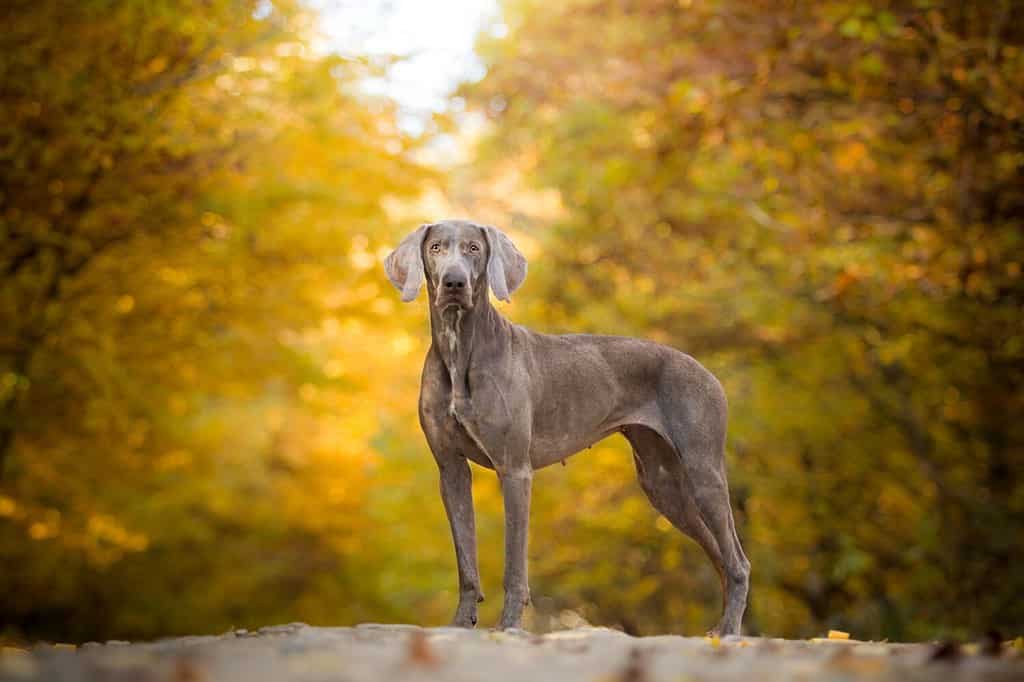
Weimaraners need a lot of exercise and space.
©JuditBerescik/Shutterstock.com
The gorgeous Weimaraner has a similar build to the Doberman but is slightly leaner. They are another German breed with perfect grace and balance, reaching around 25 inches to the shoulder. The coloring, however, is a solid silver gray, giving them the nickname ‘Gray ghost.’ They also have large floppy ears in contrast to the Doberman’s, which are pointed and erect, giving them a more severe expression.
Weimaraners were bred for hunting and are generally more open and friendly with strangers than Dobermans. They are also not quite as pushy or stubborn as their German cousins. These dogs are suited to an owner who can constantly have their dog by their side and has a spacious environment, preferably a large garden or immediate access to green spaces. They love long walks and have vast amounts of energy. However, they can be strong-willed, and you need to start positive reward-based training very early to establish clear boundaries. These dogs can be a little nervous, so early socialization with various experiences is recommended. They are not always recommended for families with young children because they will probably knock them over! They are also great swimmers, so be prepared to get wet.
German Shorthaired Pointer
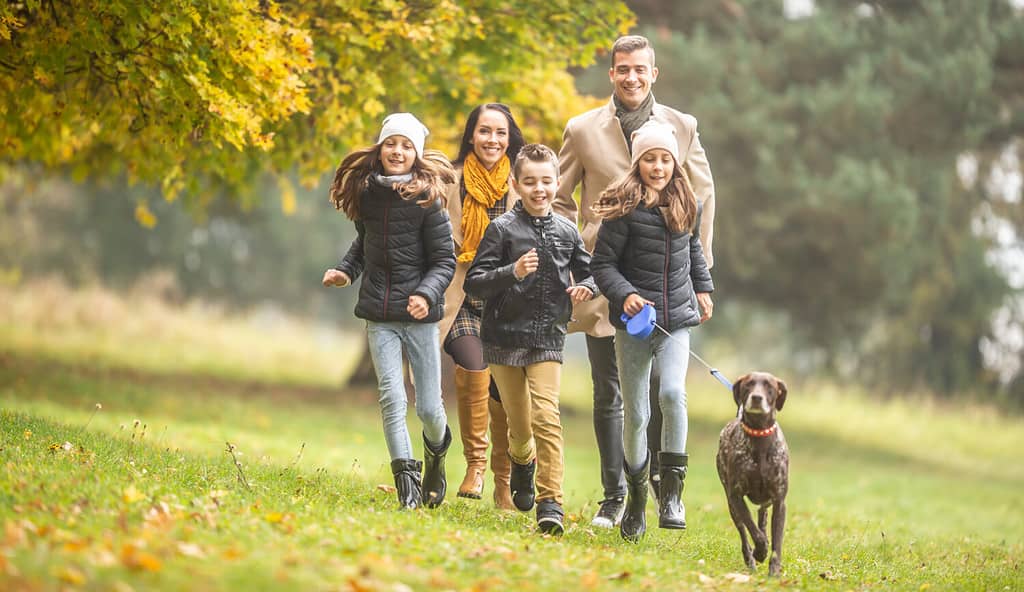
The German shorthaired pointer needs plenty of outdoor adventures.
©Marian Weyo/Shutterstock.com
As you will guess from the name, this is another German breed. In terms of build, it is a little shorter than a Doberman, standing at around 25 inches to the shoulder, and weighs about 70 pounds. Their coat is also different – solid reddish brown but can have white patterning. Despite their smaller stature, these pointers have a noble and aristocratic appearance to rival any Doberman.
If you are looking for a pet dog to hang around the house, this is not a breed for you. They suit people who have hiking, biking, or swimming as a hobby because they would love to join in with you if you have the time to take them to agility classes; that’s even better! They are very bouncy, and their exuberance will be an issue if you have small children or infirm people. Some German shorthairs can be aggressive or dominant towards other dogs; many don’t get on with cats at all. They are also not the easiest dogs to train because they are independent, bordering on willfulness. They are also very distracted by scents in particular and stop taking any notice of what you are saying!
Summary of Dogs That Look Like Dobermans
| Number | Breed |
|---|---|
| 1 | Beauceron |
| 2 | Rottweiler |
| 3 | Australian kelpie |
| 4 | Vizsla |
| 5 | Weimaraner |
| 6 | German shorthaired pointer |
Ready to discover the top 10 cutest dog breeds in the entire world?
How about the fastest dogs, the largest dogs and those that are -- quite frankly -- just the kindest dogs on the planet? Each day, AZ Animals sends out lists just like this to our thousands of email subscribers. And the best part? It's FREE. Join today by entering your email below.
Thank you for reading! Have some feedback for us? Contact the AZ Animals editorial team.








